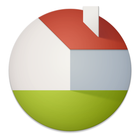Building Information Modeling, or BIM, is a way of digitally describing our built environment to computers. Aspects of our built environment that can be described are:
Products, like walls, doors, and windows
Processes, like construction or maintenance tasks, and procedures
Resources, like labour, materials, and equipment
Controls, like permits, orders, costs, or calendar availability
Actors, like occupants, clients, architects, and liable parties
Groups, like systems, inventories, or zones
These objects may have lots of data and relationships. Examples of data might be classification systems, physical materials, associated documents, simulation results, and construction types. The data may be relevant to multiple disciplines, such as architecture, engineering, and construction.
History versions
Related Software
Live Home 3D -
BRL-CAD -


![Bonsai BIM Add-on usage screenshot[1]](https://khoahoccrack.com/wp-content/themes/onenav/assets/images/t1.svg)


